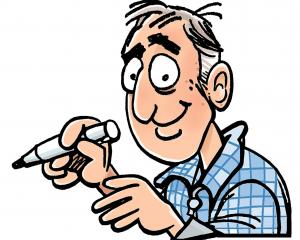There has been considerable debate on whether statues of Cecil Rhodes should remain in university precincts in different countries.
My intention is not to take sides but to make the point this is not an isolated debate.
Joss Miller (ODT, 8.2.16) said the "Rhodes must fall'' campaign was based on the premise Rhodes' 19th-century imperialist attitudes and actions were incompatible with many of our 21st-century notions.
This is undoubtedly correct, but Rhodes was hardly alone in this.
Consider my area, anatomy.
Much of the way anatomists obtained bodies for dissection up to the latter part of the 20th century (and still today in some countries) was based on the 1832 Anatomy Act in Britain.
This allowed for the use of "unclaimed bodies'', that is, from institutions housing the poor, either workhouses or asylums.
These were the bodies of the poor and disadvantaged - the outcasts of society.
While this applied to British medical schools, Dunedin and its medical school was not spared.
With the opening of the Otago Medical School in 1876, this was the way bodies were obtained.
Not only this, but when the poor houses were no longer able to provide an adequate supply of bodies, mental hospitals filled the gap.
Hence, many bodies between the years 1901 and the late 1950s came from Seacliff and other mental hospitals.
It was only from the mid-1960s the use of unclaimed bodies was replaced by those specifically bequeathed by donors before death.
From our perspective today we can say this is a far more acceptable way ethically, and it is one I have advocated should apply to all countries and all cultures.
The reason is that bequests are based on informed consent, both that of the donors themselves and their families.
It is also altruistic, being based on the notion of gift; someone is giving the gift of their body after death so that others can benefit from it.
But where does this leave those who went before us, those in anatomy departments who depended upon unclaimed bodies, where there was no informed consent of any description?
We could be very critical of them and condemn them for being ethically deficient.
After all they were operating by the standards of the 19th century and ignored what to us are cardinal ethical values.
I have had to think a great deal about this over many years, since a great deal of the resources available today, let alone a great of the information anatomists use all the time, were obtained without consent and in a manner of which we would disapprove.
And yet the discipline of anatomy depends upon them.
Think of the atlases of anatomy upon which we, let alone medical and other health science students, depend for basic anatomical information.
We know that many, if not most, of these images were based on bodies that had not been obtained by the high ethical expectations of today.
But they exist and they are accurate.
Does this mean that anything goes?
The answer is an emphatic "no''.
There are limits.
For instance, one of the best anatomical atlases is Pernkopf 's.
Eduard Pernkopf was an ardent Nazi and it is generally thought the illustrations in this atlas were based on dissection of the bodies of victims of the Nazi Holocaust in the 1940s.
While views differ on whether this atlas should be used at all, the overwhelming stance is that its origins were so ethically deplorable they contravene all that we hold dear.
The same applied to the organ donor scandals that came to light in the UK in the late 1990s.
Pathologists had abused their status in taking organs at postmortem without permission of families.
While practices like this may have taken place in the 19th and early 20th centuries when they were accepted, this no longer applied in the latter part of the 20th century.
Societies' ethical expectations had undergone a major transformation for the better, and these are now our expectations.
So how do we view practices in the past with which we today would disapprove?
My first rule-of-thumb is to ask myself what I would have done had I been operating at those times and under those circumstances?
After all, I am aware that I myself approved of practices 30 years ago (in anatomy) that I would not approve of or carry out today.
My second rule-of-thumb is to ask hypothetically what future generations will think of the ways in which we act today. Perhaps they will have good grounds for condemning us.
While we are obliged to be critical of past practices that deviate significantly from ethical norms today, we should learn from them, rather than be content with merely condemning them.
● Gareth Jones is Emeritus Professor of Anatomy in the University of Otago.










